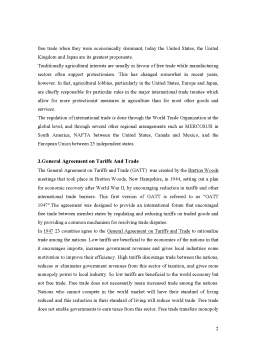Cuprins
- 1.Introduction
- 2.Regulation of international trade
- 3.General Agreement on Tariffs And Trade(GATT)
- 4.World Trade Organization(WTO)
- 4.1 Principles of the trading system
- 4.2 Membership
- 5.Trade Policy in Romania
- 6.Conclusions
- Bibliography
Extras din referat
1.Introduction
International trade is the exchange of goods and services across international boundaries or territories.In most countries, it represents a significant share of GDP.While international trade has been present throughout much of history (see Silk Road, Amber Road), its economic, social, and political importance has been on the rise in recent centuries.Industrialization, advanced transportation, globalization, multinational corporations, and outsourcing are all having a major impact.Increasing international trade is the usually primary meaning of globalization .International trade is also a branch of economics, which, together with international finance, forms the larger branch of international economics.
2.Regulation of international trade
Traditionally trade was regulated through bilateral treaties between two nations.For centuries under the belief in Mercantilism most nations had high tariffs and many restrictions on international trade.In the 19th century, especially in Britain, a belief in free trade became paramount and this view has dominated thinking among western nations for most of the time since then.In the years since the Second World War multilateral treaties like the GATT and World Trade Organization have attempted to create a globally regulated trade structure.
Free trade is usually most strongly supported by the most economically powerful nations in the world.The Netherlands and the United Kingdom were both strong advocates of free trade when they were economically dominant, today the United States, the United Kingdom and Japan are its greatest proponents.
Traditionally agricultural interests are usually in favour of free trade while manufacturing sectors often support protectionism.This has changed somewhat in recent years, however.In fact, agricultural lobbies, particularly in the United States, Europe and Japan, are chiefly responsible for particular rules in the major international trade treaties which allow for more protectionist measures in agriculture than for most other goods and services.
The regulation of international trade is done through the World Trade Organization at the global level, and through several other regional arrangements such as MERCOSUR in South America, NAFTA between the United States, Canada and Mexico, and the European Union between 25 independent states.
Preview document
Conținut arhivă zip
- General Agreement on Tariffs and Trade.doc




















